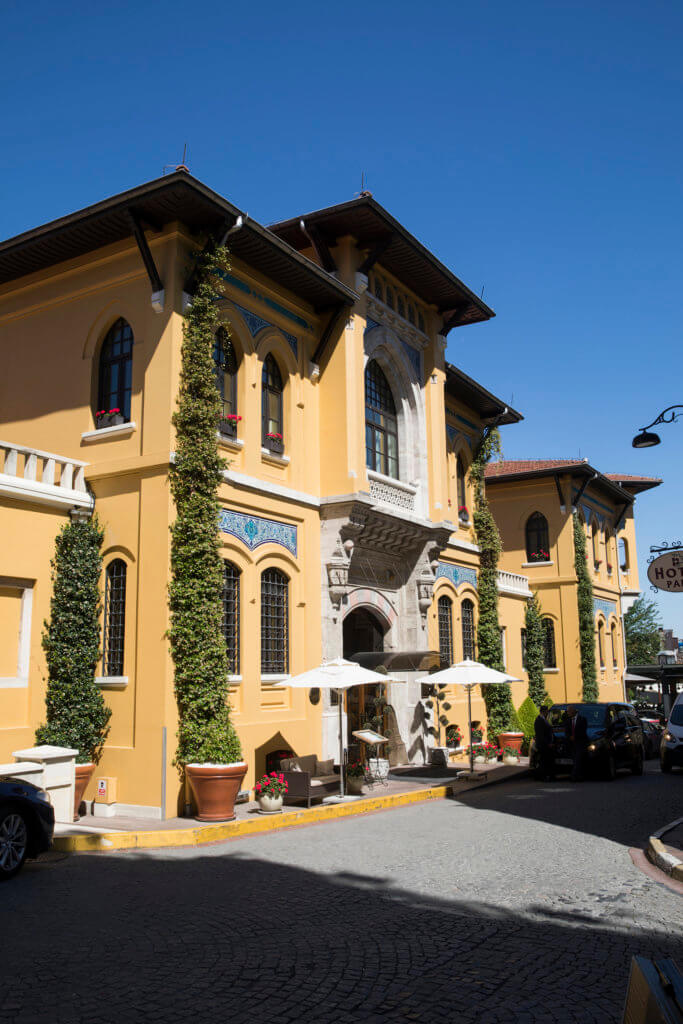The concept of a modern prison arose in the Ottoman Empire in the 19th century as part of Westernization movements. Westernization brought about certain reforms in the new constitution and judiciary mechanisms. In addition to the establishment of new institutions such as the prosecutor’s office, the notary and office of judicial inspection, the Kanun-i Esasi (Ottoman Constitution, or literally “Basic Law”) also initiated a transition from dungeons to prisons. The first regulations – or “nizamname”s as these were called – regarding prison reform were also a product of this period. In 1831, the practice of Istanbul dungeons was abolished. The notion of a ‘prison sentence’ was then adopted in penal codes dated 1840, 1851 and 1858.
When it opened in 1918-1919 the Sultanahmet Prison was called “Dersaadet Cinayet Tevkifhanesi” (literally meaning, the “Capital City – or Istanbul – Murder Jail”). Functioning as such until 1969, it was closed after the construction of the Bayrampaşa Prison. Until this date, the shackles convicts were bound with remained in place on the walls of cells submerged underground. After a break of 11 years, it was repaired and reopened so as to hold political prisoners. The fact that hundreds of thousands were arrested following the military coup of September 12 also played a part here. It served as a military prison facility from 1980 to 1986. Later, increasing need led to an enlargement of the prison’s capacity.
Here is how the prison is depicted in Orası (Over There), an unpublished novel by Nazım Hikmet he is said to have written during his time in the Sultanahmet Prison itself:
Above Solitary were the Suites. Prior to 1932, those on death row and detainees condemned to shackles would be kept in this part comprised of a narrow corridor and thirteen stone suites. Since the hunger strike held after the Communist Party of Turkey arrests, on the other hand, it has been reserved – as a privilege – for communists.
The first guests of the Sultanahmet Prison were members of the resistance in Istanbul – that is, those opposed to the city’s occupation and preparing for the War of Independence. Republican Turkey, impeccably upholding this tradition it inherited from the Ottoman Empire, did not fail to imprison its intellectuals and artists in each and every period. A majority of those targeted in the 1938 Navy Case and Communist Arrests of 1951 stayed in this prison. This is said to be where Kemal Tahir wrote his book Esir Şehrin Mahpusu (Prisoner of the Captive City), Nazım Hikmet his epic in verse Human Landscapes from My Country (Memleketimden İnsan Manzaraları), Orhan Kemal his masterpiece Ward 72 (72. Koğuş), and Yalçın Küçük his work titled Aydın Üzerine Tezler (Theses on the Intellectual). Among the other inmates of this prison were Abdülkerim Korcan, Aziz Nesin, Can Yücel, Deniz Gezmiş, Hamdi Alev Şamilof, Dr. Hikmet Kıvılcımlı, Hüsamettin Özdoğu, Mehmet Bozarslan, Mihri Belli, Necip Fazıl Kısakürek, Reşat Fuat Baraner, Sevim Belli, Sıdıka Umut (Su), Dr. Şefik Hüsnü, Vedat Türkali, Yılmaz Güney and Zeki Baştımar. It was reported that 2500 detainees and convicts were held in the 1000-capacity Sultanahmet Prison in the period after the coup of 1960.
This prison, where socialists and dissenting intellectuals were locked up both prior to and after the military coup of September 12, was also the starting place of the first struggles in refusal to wear uniform. Following a year-long resistance involving going naked in the prison where political detainees such as Sinan Kukul, Fatih Öktelmiş, Hasan Telci, Abdullah Meral, and İbrahim Erdoğan were held, the prison administration capitulated giving detainees back their clothes.

Cumhuriyet Newspaper. December 4, 1989. Istanbul Memory In Personal Archives, Taha Toros Archive.
What carried the Sultanahmet Prison to the international stage was Billy Hayes’ time as a convict here. His book Midnight Express was made into a film scripted by Oliver Stone and directed by Alan Parker in 1978.
Attempts to convert Sultanahmet Prison into a hotel began in 1992. In 1996, as the luxury Four Seasons Sultanahmet opened its doors, the wards and cells that once forcibly hosted Turkey’s intellectuals, artists and oppositional figures turned into much-demanded rooms that were rarely vacant and available only at very high prices. Turkey thus wasted yet another opportunity in terms of confronting its past. The fact that what could have been a spectacular museum of the history of repression and struggles in the Republic of Turkey was instead converted into a hotel was not only significant as an opportunity missed. The construction of 50-bed annex facilities within the area of the Sultanahmet Archaeological Park right on the site of ongoing excavations of the preserved section of the Byzantine Palace also spurred much debate. The lack of preservation of the Byzantine Palace in Ottoman times with the building of the Sultanahmet Prison upon its remains was taken to a whole other level in the Republican period when the archaeological area surrounding it was marked as the prison yard and included in the plot rented out to the hotel. The construction of the Four Seasons annex buildings was halted by decision of the Council of State despite the sustained efforts of certain scholars and politicians to prevent this. Still, however, construction continued in disregard of this ruling. Minister of Tourism at the time, Ertuğrul Günay, visited the site about a month later and announced that construction had been halted. Yet in the meantime two of the three blocks planned had already been built notwithstanding the Council of State decision to the contrary.

